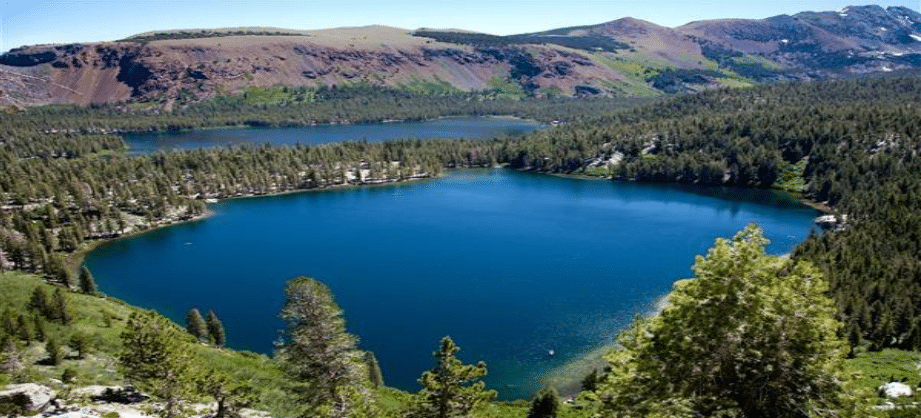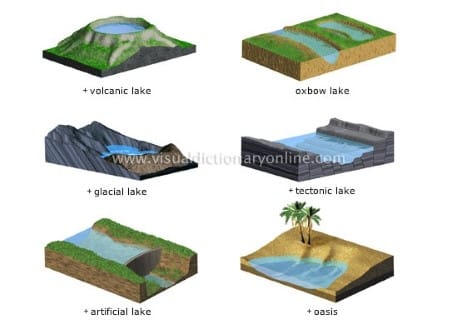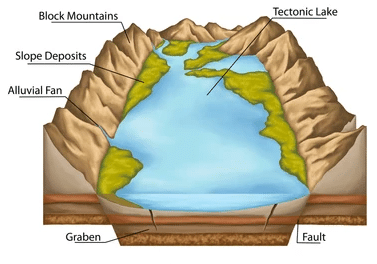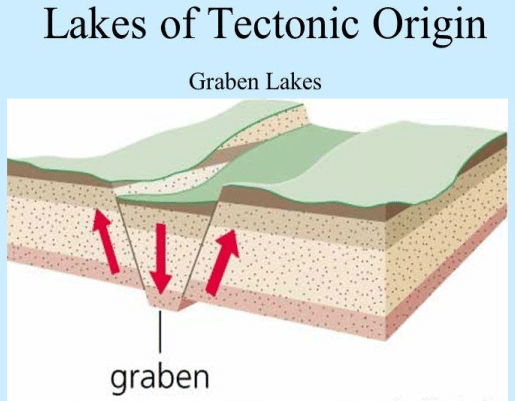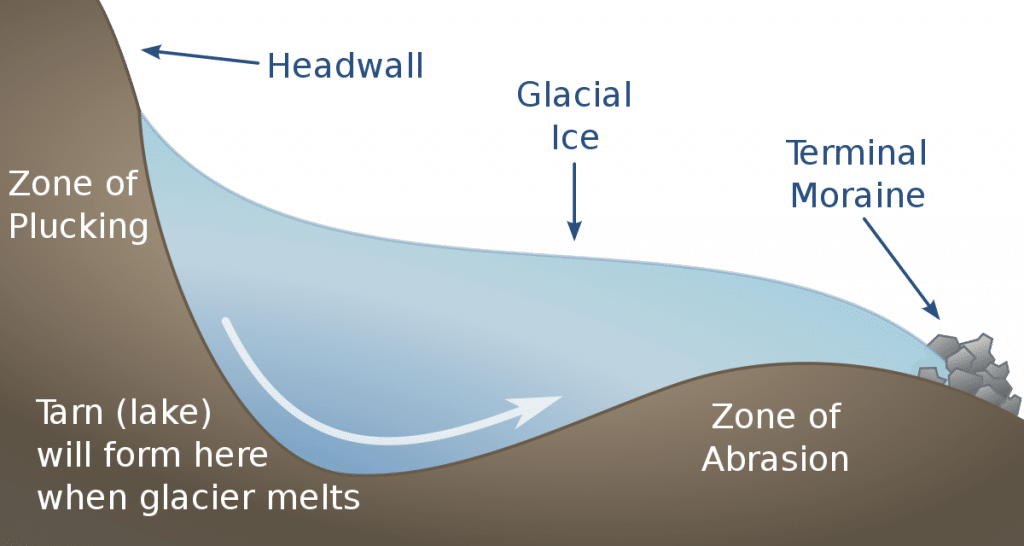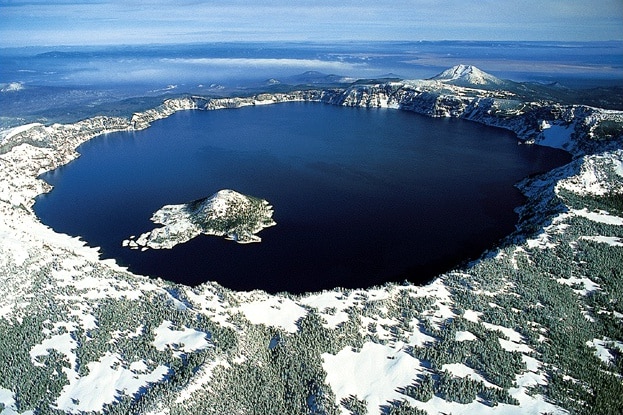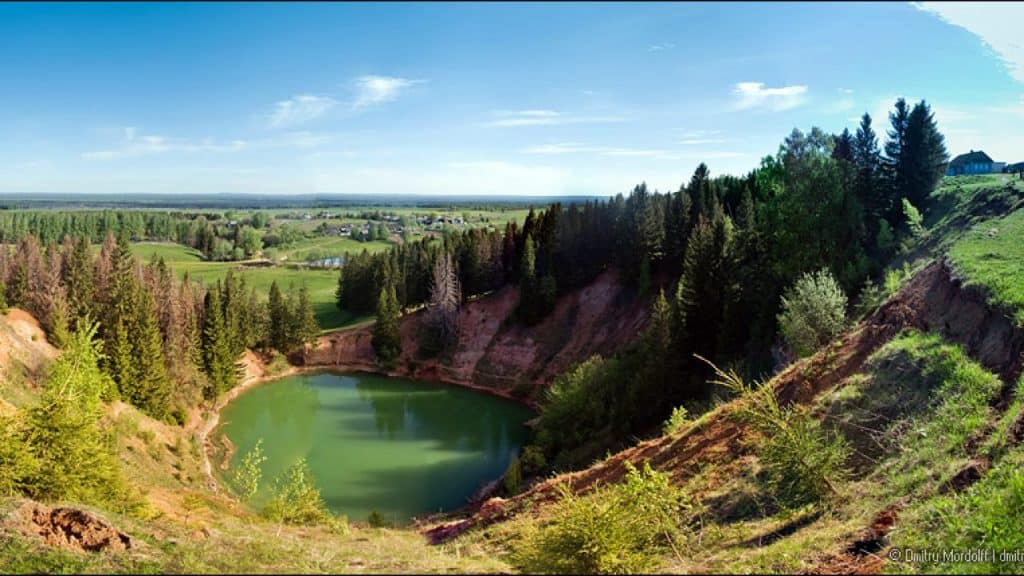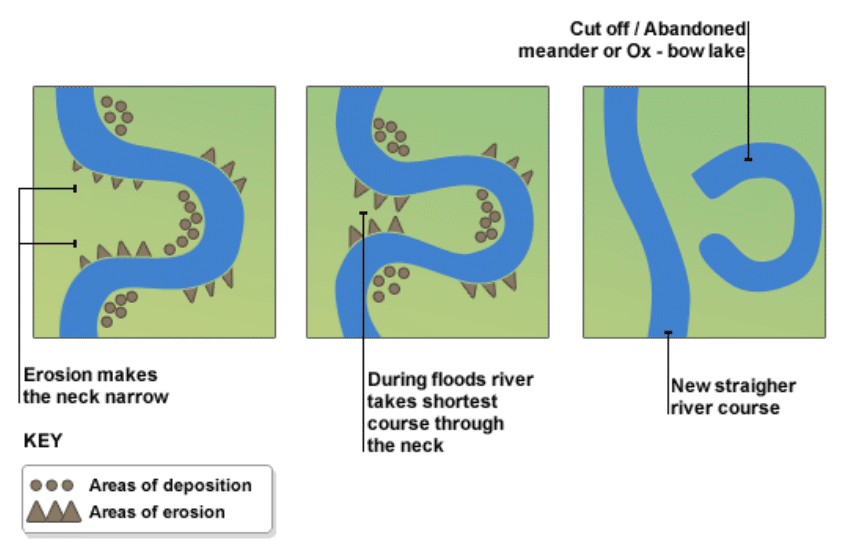Skip to main content
Lakes & Types of Lakes – UPSC
- Lakes occupy the hollows of the land surface in which water accumulates & vary tremendously in size, shape, depth & mode of formation.
- The tiny ones are no bigger than ponds or pools, but the large ones are so extensive that they merit the name of the seas e.g. Caspian Sea.
- It must be noted that the lakes are only temporary feature of the earth crust & eventually be eliminated by draining & silting up.
- Most of the lakes in the world are fresh water lakes fed by the rivers
- But in regions where evaporation is greater than precipitation & only few streams filling up the lake, form saline water lakes such as Dead sea & Great Salt Lake of Utah.
Lakes formed by earth movement
Tectonic lakes
- Due to warping, bending & fracturing of earth crust, tectonic depressions occur which give rise to lakes of immense sizes & depths
- Examples → Lake Titicaca (at Andes) – Highest lake of the world, Caspian Sea (Largest lake of the world & 5 times larger than its nearest rival i.e. lake superior)
Rift Valley Lakes
- Due to faulting, a rift valley is formed by sinking of land between two parallel faults which is deep, narrow & elongated in character.
- Water collect in these troughs & their floors are often below sea level
- Eg. Lake Tanganyika (World’s deepest lake) & Dead Sea (World’s lowest lake)
Lakes formed by Glaciation
Cirque Lakes/Tarns
- A glacier on its way down the valley leaves behind circular hollows in the heads of the valleys up in the mountains known as corries or cirque
- Their over deepened floors may be filled with water to form cirque lakes
- Those that occupy long & deep glacial troughs down the valley are termed as Ribbon lakes
Kettle Lakes
- They are basically depressions in the outwash plain left by the melting of masses of stagnant ice
- They are irregular because of the uneven moraine surface & are never of any great size or depth
Rock Hollow Lakes
- Formed by ice scouring when valley glaciers or ice sheets scoop out hollows on the rock surface (lakes enclosed within a rock hollow)
- Such lakes are abundant in Finland (Land of lakes)
Lakes formed due to Moraine damming of Valleys
- Valley glaciers often deposit moraine debris across a valley so that lakes are formed when water accumulates behind the barrier.
- Both lateral & terminal moraines are capable of damming valleys.
Lakes formed due to deposition of glacial drifts
- In glaciated lowlands with a predominant drumlin landscape, where drainage is poor
- There are intervening depressions which are often waterlogged, forming small lakes
Lakes formed by volcanic activity
Crater & Caldera Lakes
- During a volcanic explosion, top of the cone may be blown off, leaving behind a natural hollow called a crater, which may be enlarged by subsidence into a caldera
- In dormant & extinct volcanoes, rain falls straight into the crater or caldera which has no superficial outlet & forms a crater or caldera lake
Lava Blocked Lakes
- In volcanic regions a stream of lava may flow across a valley which may solidify
- Solidifying of lava may dam the river, leading to the formation of lava blocked lakes.
Lakes formed due to subsidence of volcanic land surface
- The crust of hollow lava flow may collapse
- Subsidence leaves behind a wide & hollow depression in which a lake may form.
Lakes formed by Erosion
Karst lakes
- The solvent action of rain water on limestone carves out solution hollow.
- When these become clogged with debris, lakes may form in them.
- The collapse of limestone roofs of underground caverns may result in the exposure of long, narrow lakes that were once underground.
- The large depressions called Polje, which normally do not have any outlet, may contain lakes.
Wind deflated lakes
- The deflating action of winds in deserts creates deep hollows which may reach water table via which water seeps out forming small shallow lakes.
- Excessive evaporation causes these to become salt lakes or Playas.
Lakes formed by Deposition
Lakes formed due to river deposits
- A river may shorten its course during a flood by cutting its meandering loops leaving behind a horseshoe shaped channel called ox – bow lake.
Lakes formed due to marine deposits
- The action of wind & waves may isolate lagoons along the coasts, enclosed by narrow spit of land known as lagoon lakes.
- Lagoonis a shallow body of water separated from a larger body of water by barrier islands or reefs.
- In East Germany & Poland lagoons are called Haffs.
Lakes formed due to landslides, screes & avalanches
- Landslides or screes may block valleys so that rivers are dammed, leading to formation of temporary lakes.
- Lakes formed by these processes are also known as barrier lakes.
- Such lakes are short lived because the loose fragments that pile up across the valleys will soon rupture under pressure & will give way to water.
- When they suddenly give way, the dammed water rushes down causing floods
Lakes formed by Human & Biological activities
Man-made lakes
- Besides the natural lakes, man has created artificial lakes by erecting a concrete dam across a river valley
- This is done so that the river water can be kept in check to form reservoirs.
Lakes made by animals
- Animals like Beavers are particularly interesting.
- They live in communities & construct dams across the rivers with timber, mud & soil.
- Such Beaver dams are quite permanent & modify the natural environment in such a way that the overall ecosystem builds upon the change, making beavers a keystone species.
Other type of man-made lakes
- Ornamental lakes → Especially made to attract tourists
- Lakes made by men mining activities
- Inland fishing lakes to develop inland fish culture
